Colliding Family Histories
Note: I have always maintained that our efforts with this site are for my children and grandchildren. Little did I know that my married children’s spouses would be found to mingle with our Westover ancestors. This is another tale of family history coincidences, a principle I do not believe in.
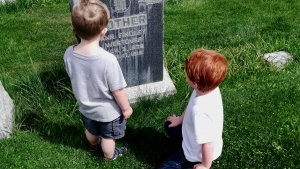 On a beautiful spring day this week I took my young grandsons, Damon and Jax, out for an afternoon ride to go see the flyover of jets being sent to Cache Valley in support of healthcare workers during the COVID-19 pandemic.
On a beautiful spring day this week I took my young grandsons, Damon and Jax, out for an afternoon ride to go see the flyover of jets being sent to Cache Valley in support of healthcare workers during the COVID-19 pandemic.
My goal was to position ourselves high on the west bench of the valley to be able to see the jets. So we drove out to Highway 30 just north of Mendon where I knew of a good spot. My goal was to see the jets and then take a little excursion just a few miles down the road to the Mendon City Cemetery, so the boys could see the graves of ancestors we have there.
We had a great time. These boys have been in my home now, with their parents and baby sister, for about six months. Although young – Damon is 7 and Jax is 4 – I felt it was a good opportunity to share some heritage with them.
Later that night, in discussing things with their mother, Angie, she shared that she is a descendent of Joel Hills Johnson, the man who penned the words to the hymn, High On The Mountain Top.
Coincidence #1: Angie is married to my son, Enoch. Joel Hills Johnson just happens to be the founder of Enoch, Utah. Funny, eh?
Intrigued, I looked up Joel Hills Johnson on Family Search.
Coincidence #2: The first thing I noted was that Joel was buried in Johnson Cemetery. Where had I seen that before? Well, that’s where Edwin Ruthven Westover is buried.
How many connections could he possibly have?
I have since spent several hours learning the story of Joel Hills Johnson. He has a prolific history, both in Utah and in the Church.
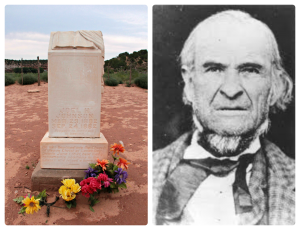 Joel H. Johnson was born on March 23, 1802, in Grafton, Massachusetts to Ezekiel Johnson and Julia Hills. He married Anna P. Johnson on November 22, 1826, and they had six children.
Joel H. Johnson was born on March 23, 1802, in Grafton, Massachusetts to Ezekiel Johnson and Julia Hills. He married Anna P. Johnson on November 22, 1826, and they had six children.
Around the year 1830, Joel sold his farm in Pomfret and moved to Amherst, Ohio. It was in Amherst where Joel was baptized a member of The Church of Jesus Christ of Latter-day Saints on June 1, 1831. Soon afterwards, he became president of the Church’s Amherst Branch. He met the Prophet Joseph in 1831. In 1832, he was called on a mission to New York.
In 1833, Joel moved to Kirtland, Ohio, where he operated a saw mill and furnished lumber to finish the temple. He went on another mission to both Ohio and Kentucky in 1835, and often preached and baptized in the vicinity of Kirtland. He attended the dedication of the Kirtland Temple.
In 1838 Joel helped organize the Kirtland Camp. He stopped at Springfield, Illinois, and did not continue to Missouri, but organized a branch in Springfield and became the first missionary to preach in Carthage, Illinois.
Coincidence #3: The date and location of Joel’s travels synchs with the dates and location of the Albert Smith family, who joined the church around this time near Springfield, Illinois.
Joel later had a large amount of success in baptizing families that lived along Crooked Creek, which was seven miles from Carthage. In April 1839 he organized these converts as the Crooked Creek Branch. After this, Joel directed his new converts in the forming of the town of Ramus (now Webster, Illinois). In February 1840 Joel moved to the area, where he purchased a sawmill. The Ramus Stake was organized on July 4, 1840, with Joel as president. Joel’s wife died in September 1840. He was here in Ramus when the Prophet Joseph and Hyrum were martyred in June 1844.
In 1846, mobs forced Joel to flee Ramus and moved to Knox County, Illinois. He later joined the Saints at Winter Quarters, Nebraska. Joel arrived in Salt Lake City on October 11, 1848. He crossed the plains in Willard Richards’ Company.
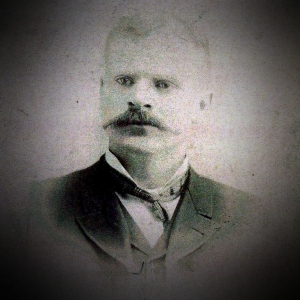 Coincidence #4: Also in the Willard Richards Company was David Rowe and family. Is it possible they knew each other?
Coincidence #4: Also in the Willard Richards Company was David Rowe and family. Is it possible they knew each other?
Yes.
From Joel’s own journal we read: “…I loaded my wagons and started on the 6th day of May, 1848 for the city of Great Salt Lake in Upper California I came to David Rowe’s in Fulton County the first night and on the 7th, David Rowe and his family started with me for the same place. My family consisted of myself and two women and six children. David Rowe’s family consisted of himself, wife, and four children. We came to Nauvoo where I stopped and visited with my friends. We then crossed over the river to Montrose and stopped with my brother Joseph one week, sheared my sheep, sold the wool, etc. We then started for Winter Quarters and had a very crooked and bad road and had to repair and build many bridges. We arrived at Winter Quarters the first week in June. Here we tarried four weeks, waiting for Doctor Richards and Amasa Lyman’s company.”
He served as a justice of the peace and as Bishop of the Mill Creek Ward. Joel built a saw mill from 1849 to 1851 at the mouth of Mill Creek Canyon.
As he made his wagon trips up and down the steep canyon, he often thought about the flag that had been planted on Ensign Peak. He knew he had safely made it down the mountain with his load when he turned north and headed for the tithing office. He always breathed easier when he could look up at that peak and see Old Glory waving.
In the early spring of 1850, Joel loaded up a load of prime lumber and headed for the tithing office. As he headed into the lot that housed this office, he noticed that there were several other wagon loads of tithing offerings ahead of him. He stopped his team, unhitched the horses and turned them into “Brother Brigham’s” pasture, and sat down to wait his turn to unload.
Being a warm spring day, Joel sought the shady side of his wagon, leaned back against the wheel and waited. As was his habit, he pulled out a piece of paper and prepared to write. He found himself thinking about the breeze and how it must be making ‘Old Glory’ ripple. In his mind he pictured how it must look there on the top of the peak under the clear blue sky as it waved and fluttered in the breeze. His mind painted such a wonderful picture.
Almost as if written by unseen hands, words began to appear on the paper:
High on the mountain top,
A banner is unfurled.
Ye nations now look up;
It waves to all the world.
In Deseret’s sweet, peaceful land-
On Zion’s mount behold it stand!
For God remembers still
His promise made of old
That He on Zion’s hill
Truth’s standard would unfold!
Her light should there attract the gaze
Of all the world in latter days.
His house shall there be reared
His glory to display
And people shall be heard
In distant lands to say
We’ll now go up and serve the Lord
Obey His truth, and learn His word.
For there we shall be taught
The law that will go forth,
With truth and wisdom fraught
To govern all the earth;
Forever there His ways we’ll tread
And save ourselves and all our dead.
Then hail to Deseret!
A refuge for the good,
And safety for the great,
If they but understood.
That God with plagues will shake the world
Till all its thrones shall down be hurled.
In Deseret doth truth
Rear up its royal head;
Though nations may oppose,
Still wider it shall spread;
Yes, truth and justice, love and grace,
In Deseret find ample place.
Joel finished his poem, folded up the paper, put it in his pocket, and went about the task of getting his lumber measured and recorded.
Sometime later he showed his poem to John Taylor, then a member of the Quorum of the Twelve. President Taylor liked the poem so much he asked if he could keep it.
In those days, words only were written down and then sung to familiar folk tunes. In just a short time it became one of the favorite songs where ever the Saints gathered
This poem was only one of about a thousand that Joel H. wrote. But it became one of his most recognized ones.
His poetry centered around four themes: His love and devotion to the gospel, his love of the Prophet Joseph Smith, his love of his family, and his desire to enjoy life, liberty, and the pursuit of happiness for himself and all other human beings.
In 1849 and 1850, Joel served in the Utah Territorial Legislature.
Joel was the founder of Enoch, Utah, settling there in 1851. When other settlers arrived in 1854, they built a fort which they named “Johnson’s Fort.” Before it became Enoch, it was named Elk Horn Springs. Joel later helped settle other areas in southern Utah. In 1853, he was appointed to serve as a missionary among the Piedes of Iron County, Utah. Joel recorded in his journal that he “made eleven different places.”
Joel was a polygamist and fathered several children from five wives. Joel maintained a journal in which was found the earliest source for the interpretation of “hot drinks” in the Word of Wisdom meaning coffee and tea. He recorded hearing the Prophet Joseph teach this principle.
In 1871, at the suggestion of Brigham Young, Joel and his brothers explored an area north and east of Kanab known as Spring Canyon. There they took up the challenge of building a settlement to “live the Order of Enoch”.
The Johnson families establish farms, a schoolhouse, a general store and even a post office. From 1871 until about the 1930s the tiny, out-of-the-way place was home to several families.
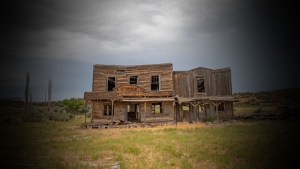 But due to it’s remote location and the scattering of the settlement’s later generations Johnson became a ghost town. It’s only other claim to fame came from the television series Gunsmoke, which ran from 1955 to 1975. The ghost town of Johnson was the set for the series.
But due to it’s remote location and the scattering of the settlement’s later generations Johnson became a ghost town. It’s only other claim to fame came from the television series Gunsmoke, which ran from 1955 to 1975. The ghost town of Johnson was the set for the series.
Coincidence #5: Another family that found their way to Johnson was that of Henrietta Bird Shumway, the third wife of Charles Shumway. They came from Mendon, Utah in Cache Valley. Charles Shumway was the father of Mary Eliza Shumway, the 2nd wife of Charles Westover, Edwin’s brother.
(Charles Shumway was also a founder of Manti, Utah and is frequently mentioned in the ward history there with both Albert Smith and Gardner Snow. The man got around to many lines in our ancestry!)
Henrietta’s biography recounts her experience upon arriving at the canyon: “The farm, unfenced and uncleared had never known a plough. The only shelter was a deserted trapper’s cabin, so small that when all the beds were made, Henrietta could scarcely walk between them to cook the meals.
All of those buried in the Johnson Cemetery died in the 19th century, including Edwin. It is noted that the Johnsons and the Shumway generations to follow intermarried a great deal and are buried in that cemetery.
According to Findagrave.com only 59 people are buried there – mostly Johnsons, Shumways, and Laws.
Joel Hills Johnson was well connected to Mormon leadership in the 19th Century. He knew the Prophet Joseph (and loved him immensely). He knew Brigham Young, John Taylor, Wilford Woodruff and Erastus Snow.
Coincidence #6: In fact, there is so much in his history I feel we could be finding connections to him all over the place. Curious to know if I might be related to him I dug a little deeper into his family lines. Sure enough, we’re connected back to the 17th century to a man named Nathaniel Heaton. He is my 10th great grandfather through the Snow/Roberts line. Nathaniel Heaton Joel H. Johnson’s 7th great grandfather.
Well, my grandchildren through Enoch and Angie are going to have a lot of work to do someday. Their Johnson family history runs strong in the blood. Angie also tells me she has other Danish ancestors with pioneer backgrounds in the Church.
I’m sure that’s no coincidence.

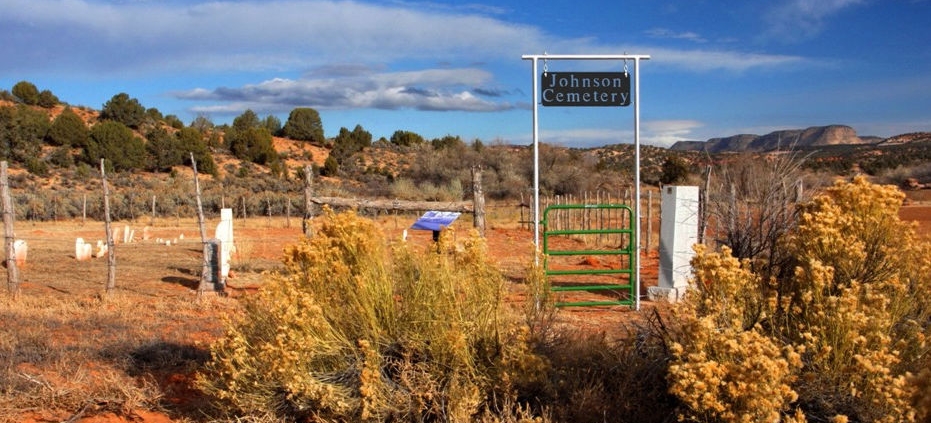
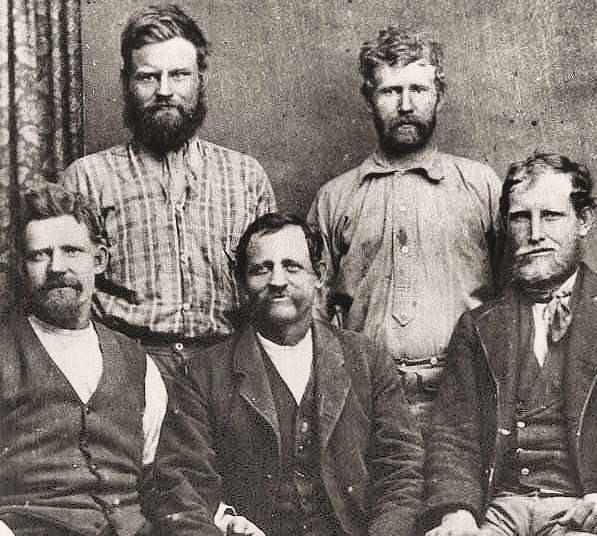
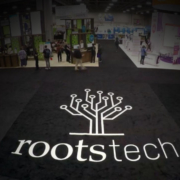


Leave a Reply
Want to join the discussion?Feel free to contribute!